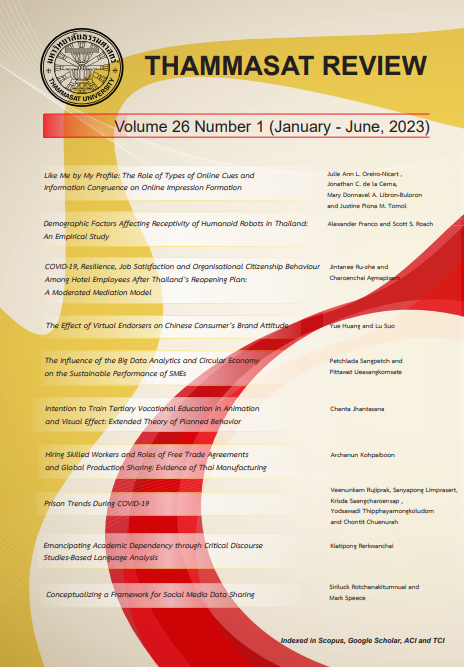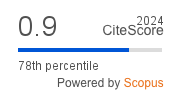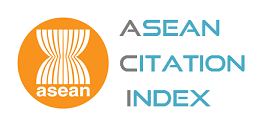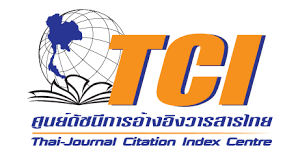Conceptualizing a Framework for Social Media Data Sharing
Keywords:
Social media data sharing, Information value, Social influences, Trust, Perceived riskAbstract
Information sharing is one of the most important trends on social media nowadays, but detailed research on what can encourage it is still in the early stages. This exploratory work examines three categories of antecedents to data sharing which have come up in the literature: sharing benefits, social influences, and trust / risk issues, particularly associated with reliable vs. false information. A very simple model of direct impacts shows that information value, voluntary sharing, and false data risk significantly impact data sharing, but the other antecedents do not. The dependent variable was explicitly about sharing factual data, and these results suggest some feeling of social obligation to voluntarily share, particularly when respondents are well aware of the prevalence of misinformation. Social media providers together with organizations can contribute to efforts at preventing disinformation to enhance their credibility with social media users or customers.
References
Abbas, A. F., Jusoh, A., Mas’od, A., Alsharif, A. H., & Ali, J. (2022). Bibliometrix analysis of information sharing in social media. Cogent Business & Management, 9(1), 2016556.
Aguilar, J., & Terán, O. (2016). Social media and free knowledge: case study–public opinion formation. In Politics and Social Activism: Concepts, Methodologies, Tools, and Applications (pp. 433-466). IGI Global.
Ahmed, Y.A., Ahmad, M.N., Ahmad, N. & Zakaria, N.H. (2019). Social media for knowledge-sharing: A systematic literature review. Telematics and Informatics, 37, 72-112.
Al-Busaidi, K. A., & Olfman, L. (2017). Knowledge sharing through inter-organizational knowledge sharing systems. VINE Journal of Information and Knowledge Management Systems, 47(1), 110-136.
Ashraf, R. U., Hou, F., & Ahmad, W. (2019). Understanding continuance intention to use social media in China: The roles of personality drivers, hedonic value, and utilitarian value. International Journal of Human–Computer Interaction, 35(13), 1216-1228.
Baima, G., Santoro, G., Pellicelli, A. C., & Mitręga, M. (2022). Testing the antecedents of customer knowledge sharing on social media: a quantitative analysis on Italian consumers. International Marketing Review, 39(3), 682-705.
Barger, V., Peltier, J. W., & Schultz, D. E. (2016). Social media and consumer engagement: a review and research agenda, Journal of Research in Interactive Marketing, 10(4), 268-287.
Baumgartner, H., & Weijters, B. (2021). Dealing with common method variance in international marketing research. Journal of International Marketing, 29(3), 7-22.
Chakraborty, R., Vishik, C., & Rao, H. R. (2013). Privacy preserving actions of older adults on social media: Exploring the behavior of opting out of information sharing. Decision Support Systems, 55(4), 948-956.
Chang, S. E., Liu, A. Y. & Shen, W. C. (2017). User trust in social networking services: A comparison of Facebook and LinkedIn. Computers in Human Behavior, 69, 207-217.
Cheung, C., & Lee, M. (2010). A theoretical model of intentional social action in online social networks. Decision Support Systems, 40, 24-30.
Chiu, C.M., Hsu, M. H., & Wang, E.T. (2006). Understanding knowledge sharing in virtual communities: an integration of social capital and social cognitive theories. Decision Support Systems, 42(3), 1872-1888.
Chow, C. W., Deng, F. J., & Ho, J. L. (2000). The openness of knowledge sharing within organizations: A comparative study of the United States and the People's Republic of China. Journal of Management Accounting Research, 12, 65−95
Chow, C. W., Harrison, G. L., McKinnon, J. L., & Wu, A. (1999). Cultural influences on informal information sharing in Chinese and Anglo-American organizations: an exploratory study. Accounting, Organizations and Society, 24(7), 561-582.
de Oliveira Santini, F., Ladeira, W. J., Pinto, D. C., Herter, M. M., Sampaio, C. H., & Babin, B. J. (2020). Customer engagement in social media: a framework and meta-analysis. Journal of the Academy of Marketing Science, 48, 1211-1228.
Di Domenico, G., Sit, J., Ishizaka, A., & Nunan, D. (2021). Fake news, social media and marketing: A systematic review. Journal of Business Research, 124, 329-341.
Dong, Y., Bartol, K. M., Zhang, Z. X., & Li, C. (2017). Enhancing employee creativity via individual skill development and team knowledge sharing: Influences of dual‐focused transformational leadership. Journal of Organizational Behavior, 38(3), 439-458.
Dowling, G. R. & Staelin, R. (1994). A model of perceived risk and intended risk handling activity. Journal of Consumer Research, 21(1), 119-134.
Dunne, Á., Lawlor, M. A., & Rowley, J. (2010). Young people's use of online social networking sites–a uses and gratifications perspective. Journal of Research in interactive Marketing, 4(1), 46-58.2012
Dwivedi, Y. K., Rana, N. P., Jeyaraj, A., Clement, M., & Williams, M. D. (2019). Re-examining the unified theory of acceptance and use of technology (UTAUT): Towards a revised theoretical model. Information Systems Frontiers, 21(3), 719-734.
Eckhardt, A., Laumer, S., and Weitzel, T. (2009). Who influences whom? Analyzing workplace referents’ social influence on IT adoption and non-adoption. Journal of Information Technology, 24(1), 11-24.
Grabner-Kräuter, S., & Kaluscha, E. A. (2003). Empirical research in on-line trust: a review and critical assessment. International Journal of Human-Computer Studies, 58(6), 783-812.
Graf-Vlachy, L., Buhtz, K., & König, A. (2018). Social influence in technology adoption: taking stock and moving forward. Management Review Quarterly, 68, 37-76.
Hair, J. F. Jr., Black, W. C., Babin, B.J., & Anderson, R. E. (2014). Multivariate Data Analysis, Seventh Edition. Pearson.
Hashim, K. F. & Tan, F. B. (2015). The mediating role of trust and commitment on members’ continuous knowledge sharing intention: A commitment-trust theory perspective. International Journal of Information Management, 35(2), 145-151.
Hsieh-Yee, I. (2021). Can We Trust Social Media?. Internet Reference Services Quarterly, 25(1-2), 9-23.
Kaur, K., & Gupta, S. (2022). Towards dissemination, detection and combating misinformation on social media: a literature review. Journal of Business & Industrial Marketing, (ahead-of-print). https://doi.org/10.1108/JBIM-02-2022-0066
Kaewkitipong, L., Chen, C. C. & Ractham, P. (2016a). A community-based approach to sharing knowledge before, during, and after crisis events: A case study from Thailand. Computers in Human Behavior, 54, 653-666.
Kaewkitipong, L., Chen, C. C., Ractham, P. (2016b). Using social media to enrich information systems field trip experiences: Students' satisfaction and continuance intentions. Computers in Human Behavior, 63, 256-263.
Kim, H. W., Chan, H. C., & Gupta, S. (2007). Value-based adoption of mobile internet: an empirical investigation. Decision Support Systems, 43(1), 111-126.
Kim, Y. A. & Ahmad, M. A. (2013). Trust, distrust and lack of confidence of users in online social media-sharing communities. Knowledge-Based Systems, 37, 438–450.
Lee, C. S., & Ma, L. (2012). News sharing in social media: The effect of gratifications and prior experience. Computers in Human Behavior, 28(2), 331-339.
Li, H., Li, L., Gan, C., Liu, Y., Tan, C. W., & Deng, Z. (2018). Disentangling the factors driving users' continuance intention towards social media: A configurational perspective. Computers in Human Behavior, 85, 175-182.
Liao, J., Dong, X., & Guo, Y. (2020). Examining knowledge contribution in firm-versus consumer-hosted virtual brand community. Electronic Commerce Research and Applications, 41, 100963.
Limaye, R. J., Sauer, M., Ali, J., Bernstein, J., Wahl, B., Barnhill, A., & Labrique, A. (2020). Building trust while influencing online COVID-19 content in the social media world. The Lancet Digital Health, 2(6), e277-e278.
Lin, X., Sarker, S., & Featherman, M. (2019). Users’ psychological perceptions of information sharing in the context of social media: A comprehensive model. International Journal of Electronic Commerce, 23(4), 453-491.
Liu, X., Min, Q., & Han, S. (2020). Understanding users’ continuous content contribution behaviours on microblogs: An integrated perspective of uses and gratification theory and social influence theory. Behaviour & Information Technology, 39(5), 525-543.
Ma, L., Zhang, X., & Yan Ding, X. (2018). Social media users’ share intention and subjective well-being: An empirical study based on WeChat. Online Information Review, 42(6), 784-801.
Melchior, C., & Oliveira, M. (2022). Health-related fake news on social media platforms: A systematic literature review. New Media & Society, 24(6), 1500-1522.
Mojdeh, S., Head, M., & El Shamy, N. (2018). Knowledge sharing in social networking sites: how context impacts individuals’ social and intrinsic motivation to contribute in online communities. AIS Transactions on Human-Computer Interaction, 10(2), 82-104.
Morgan, R.M., & Hunt, S.D. (1994). The commitment-trust theory of relationship marketing. Journal of Marketing, 58(3), 20-38.
Muliadi, M., Muhammadiah, M. U., Amin, K. F., Kaharuddin, K., Junaidi, J., Pratiwi, B. I., & Fitriani, F. (2022). The information sharing among students on social media: the role of social capital and trust. VINE Journal of Information and Knowledge Management Systems. https://doi.org/10.1108/VJIKMS-12-2021-0285
Nadeem, W., Khani, A.H., Schultz, C.D., Adam, N.A., Attar, R.W., & Hajli, N. (2020). How social presence drives commitment and loyalty with online brand communities? the role of social commerce trust. Journal of Retailing and Consumer Services, 55, 102136
Pek, J., & MacCallum, R.C. (2011). Sensitivity analysis in structural equation models: Cases and their influence. Multivariate Behavioral Research, 46(2), 202-228.
Pennycook, G., & Rand, D. G. (2022). Nudging social media toward accuracy. The Annals of the American Academy of Political and Social Science, 700(1), 152-164.
Pongpaew, W., Speece, M., & Tiangsoongnern, L. (2017). Social presence and customer brand engagement on Facebook brand pages. Journal of Product & Brand Management, 26(3), 262-281.
Puspitasari, I., Fauzi, S. S. M., & Ho, C. Y. (2021). Factors driving users’ engagement in patient social network systems. Informatics, 8(1), 8; https://doi.org/10.3390/ informatics8010008
Rotchanakitumnuai, S. (2008). Measuring e‐government service value with the E‐GOVSQUAL‐ RISK model. Business Process Management Journal, 14(5), 724-737.
Rotchanakitumnuai, S., & Speece, M. (2003). Barriers to Internet banking adoption: a qualitative study among corporate customers in Thailand. International Journal of Bank Marketing, 21(6/7), 312-323.
Rotchanakitumnuai, S. & M. Speece. 2022. How Relationship Quality Drives Knowledge Sharing on Facebook Brand Pages. Journal of International Consumer Marketing (ahead-of-print). https://doi.org/10.1080/08961530.2022.2092925
Stone, R. & Gronhaug, K. (1993). Perceived Risk: Further Considerations for the Marketing Discipline. European Journal of Marketing, 27, 39-50.
Sukhu, A., Zhang, T., & Bilgihan, A. (2015). Factors influencing information-sharing behaviors in social networking sites. Services Marketing Quarterly, 36(4), 317-334.
Tajvidi, M., Richard, M.O., Wang, Y., & Hajli, N. (2020). Brand co-creation through social commerce information sharing: The role of social media. Journal of Business Research, 121, 476-486. https://doi.org/10.1016/j.jbusres.2018.06.008
Tan, X., Qin, L., Kim, Y., & Hsu, J. (2012). Impact of privacy concern in social networking web sites. Internet Research, 22(2), 211-233.
The Drum. (2020, 23 September). Consumers say brands must do more to fight misinformation. https://www.thedrum.com/news/2020/09/23/consumers-say-brands-must-do-more-fight-misinformation
Tim, Y., Pan, S.L., Ractham, P. & Kaewkitipong, L. (2017). Digitally enabled disaster response: the emergence of social media as boundary objects in a flooding disaster. Information Systems Journal, 27(2), 197-232.
Turel, O., Serenko, A., & Bontis, N. (2010). User acceptance of hedonic digital artifacts: A theory of consumption values perspective. Information & Management, 47(1), 53-59.
Venkatesh, V., Morris, M.B., Davis, B.B., and Davis, F.D. (2003). User acceptance of information technology: Toward a unified view. MIS Quarterly, 27(3), 425-478.
Vraga, E. K., & Tully, M. (2021). News literacy, social media behaviors, and skepticism toward information on social media. Information, Communication & Society, 24(2), 150-166.
Wang, K. Y., Chih, W.H., & Hsu, L.C. (2020). Building brand community relationships on Facebook fan pages: The role of perceived interactivity. International Journal of Electronic Commerce, 24(2), 211-231.
Wang, Y., Min, Q., & Han, S. (2016). Understanding the effects of trust and risk on individual behavior toward social media platforms: A meta-analysis of the empirical evidence. Computers in Human Behavior, 56, 34-44.
WeAreSocial.com. (2023). Digital 2023 Thailand, accessed March 2023 at: https://datareportal. com/reports/digital-2023-thailand
Yoo, J., Choi, S., Choi, M., & Rho, J. (2014). Why people use Twitter: social conformity and social value perspectives. Online Information Review, 38(2), 265-283.
Zhang, X., Jinpeng, X., & Khan, F. (2020). The influence of social media on employee’s knowledge sharing motivation: a two-factor theory perspective. Sage Open, 10(3), 2158244020942495.
Zhang, X., & Liu, S. (2022). Understanding relationship commitment and continuous knowledge sharing in online health communities: a social exchange perspective. Journal of Knowledge Management, 26(3), 592-614
Zeithaml, V. A. (1988). Consumer perceptions of price, quality, and value: a means-end model and synthesis of evidence. Journal of Marketing, 52(3), 2-22.
Downloads
Published
How to Cite
Issue
Section
License
Copyright (c) 2023 Thammasat Review

This work is licensed under a Creative Commons Attribution-NonCommercial-NoDerivatives 4.0 International License.
The opinions and ideas expressed in all submissions published in Thammasat Review are solely that of the author(s) and do not necessarily reflect that of the editors or the editorial board.
The copyright of all articles including all written content and illustrations belong to Thammasat Review. Any individuals or organisation wishing to publish, reproduce and distribute a particular manuscript must seek permission from the journal first.








